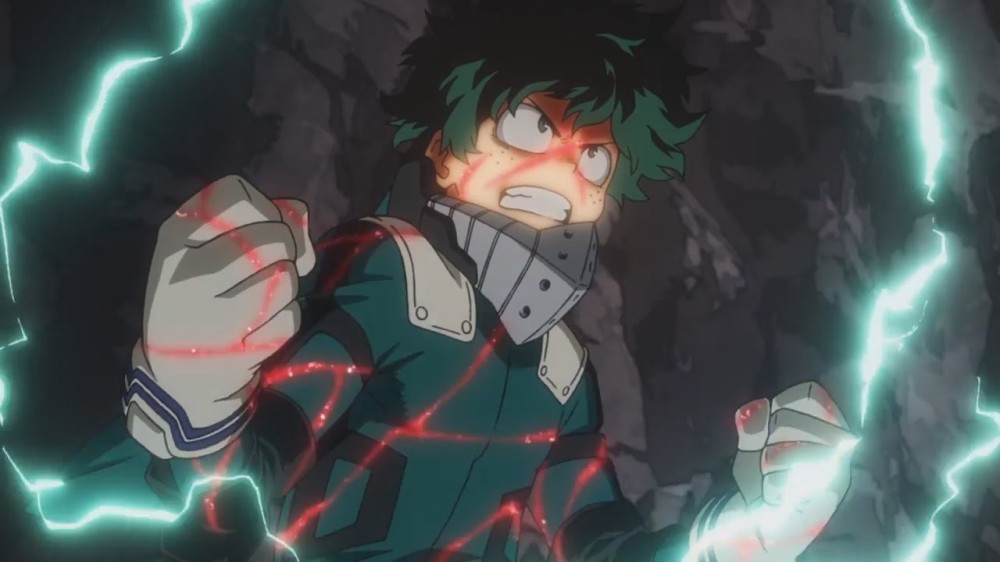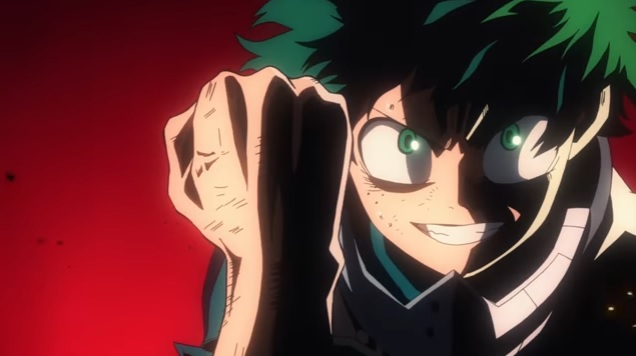Tokyo Ghoul Re Episode 6 Review
After several weeks of mediocrity and some very questionable direction, Tokyo Ghoul delivers a functional episode. A masterwork it is not. But this is the first episode of Re that truly succeeds as a piece of entertainment. But rather than talk about this episode, I want to briefly address last week’s. It felt like a focal point of the season – it was actionpacked, featured some slightly smoother animation, and even brought back the original opening that has become so iconic. But somehow it ranked as the seasons most boring episode yet. After talking about how well Hero Academia handled action with its last episode, I thought I’d discuss what bad action looks like.
The first fight of episode six features a ghoul named Nutcracker. As a general disclaimer, I acknowledge that these fights are pretty poorly animated and choreographed, but I’m not going to focus on that. A fight can be low budget and skill keep the audience engaged. What I want to emphasize is the stakes as well as the internal logic of the fights. In the case of Nutcracker, she can detach parts of her body and turn them into traps, which is actually a pretty cool power. But here’s the issue – we find this out when Shiraju jumps up in the air for an attack and triggers a trap in the ceiling. Now, how often do you see a character jump up for an attack? Being the obsessive nerd that I am, I checked through episodes of Tokyo ghoul, and let me tell you; it’s happens sometimes, but never to the point where characters are practically touching the ceiling. So clearly Shiraju only jumped so high so he could trigger this trap and some exposition about Nutcracker’s powers.
And the explanation Shirazu gets makes no sense. He is told that Nutcracker can set traps, and that he should stay away from the walls and ceiling. But if that is her power, then why wouldn’t she set traps in the floor? Isn’t that where people tend to be walk? It would be like putting land mines in trees instead of the ground, in case someone decides to go for a climb in the middle of combat. Is there a reason there aren’t any floor traps? Is there some convincing reason why Nutcracker couldn’t also lay traps there? And while we’re on the issue of traps, how many ceiling traps are there? Shirazu managed to reach the peak of his jump right where a trap is. Either he’s really unlucky, or we should assume there are a lot of traps in the ceiling. We saw someone else get hit with a ceiling trap last episode, so this seems like a logical assumption.
But if that’s the case, why not put traps everywhere? Or is there a limit to how many traps Nut Cracker can place? If that’s the case, then why put so many of your traps on the ceiling, where the enemy are unlikely to be? I guess it’s a good thing that in this specific fight, all of the characters suddenly decide to hang out on the ceiling. And I’d like to also point out that there are other fights going on right now, also in enclosed spaces, and no one is hanging out near the ceiling. I guess that’s because they have no plot conveniences to trigger.
The second half of the episode is dominated by Hasei’s fight with Owl, which has just as many logical errors. The first problem is that it’s one of those fights where projectiles are being shot everywhere, but stepping slightly to the left or right counts as dodging. And fine, I’m willing to accept that doing somersaults somehow lets you dodge projectile weapons. But there’s a moment where Hasie jumps right into a hail of spikes, and none of them hit him. His opponent is literally firing directly at him, and Hasie is jumping right into the incoming fire, yet none of them land. Or there’s a moment where Hasie is seemingly defeated, yet his opponent just stands over him while he completes his internal monologue.
Meanwhile, there’s never any indication that an attack is dealing damage. Characters are knocked back, but they don’t become more sluggish as the fight goes on. They don’t seem any more tired. They look like shit, but that’s the extent of it. Also, what’s our indication that a character is more powerful than another? We only get the sense a character is strong because we are told so, but nothing in the way their attacks and movement are presented reinforces that fact. And the damage never feels real because the peril is never genuine. There are many moments throughout where characters are clearly defeated, but the enemy simply stands there and says nothing for over a minute. Then they finally intervene, just for more good guys to show up and block their attack. This setup happens twice in this in episode alone.
And I understand – these are problems inherent in many action anime. But at least in those others, the powers stand out and the damage feels real. In My Hero, Deku breaking an arm feels like a real injury. And everyone fights in their own distinct way. But in Tokyo Ghoul, all attacks boil down to punching and swinging your tail around. Even mass produced anime had more distinctive attacks and sounder logic than this. Think of Bleach – hardly a perfect show, but it’s fights were far more unique than this. For instance, there was one fight where a character could control objects by looking at them. He took over the limbs of his opponent, so his opponent severed the tendons in his own arms and legs. At this point, that characters can’t use those body parts. The fight has a real sense of forward momentum. Injuries matter. Also, the fight feels special. This is a unique ability that requires a unique approach (such as self mutilation). Tokyo Ghoul has yet to offer a single fight as imaginative and distinct as this. And while I hope to focus on the positive next week, I wanted to take the time to go over the fights in this episode, since this is an element of the show has been bothering me constantly. Hopefully next week I’ll get to focus on some of the things this season has done right, just to shake things up.
Until next time.
 I’ve always been confused by the explosive popularity of My Hero – it always felt like a fairly standard action Shounen with one note characters and devoting or plots. Beat for beat, the first season feels eerily reminiscent of old school Naruto. The second season was a definite improvement, but by then my patience was in short supply and I didn’t make it past the halfway point. I went back and watched some of the major plot moments in anticipation for season 3, but I was still not feeling it. Thankfully, season 3 offers us a genuinely great action set piece, similar in style to Hunter X Hunter (the best Shonen anime, in my humble opinion), and has me genuinely reinvested in the series.
I’ve always been confused by the explosive popularity of My Hero – it always felt like a fairly standard action Shounen with one note characters and devoting or plots. Beat for beat, the first season feels eerily reminiscent of old school Naruto. The second season was a definite improvement, but by then my patience was in short supply and I didn’t make it past the halfway point. I went back and watched some of the major plot moments in anticipation for season 3, but I was still not feeling it. Thankfully, season 3 offers us a genuinely great action set piece, similar in style to Hunter X Hunter (the best Shonen anime, in my humble opinion), and has me genuinely reinvested in the series.